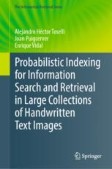Search
Search Results
-
Toward Design of Synthetic Active Inference Agents by Mere Mortals
The theoretical properties of active inference agents are impressive, but how do we realize effective agents in working hardware and software on edge...
-
Relative Representations for Cognitive Graphs
Although the latent spaces learned by distinct neural networks are not generally directly comparable, even when model architecture and training data...
-
Automated Quality-Controlled Left Heart Segmentation from 2D Echocardiography
Segmentation of 2D echocardiography (2DE) images is an important prerequisite for quantifying cardiac function. Although deep learning can automate...
-
Probabilistic Interpretation of Traditional KWS Approaches
In this chapter traditional ideas and approaches forKWS are reviewed under the probabilistic framework proposed in Chapter 3. Both QbE and QbS...
-
State Of The Art
As discussed in the previous chapter, the PrIx framework explicitly adopts the IR point of view, but it draws from many concepts and methods...
-
Probabilistic Models for Handwritten Text
As discussed in the previous chapter, PrIx (and KWS), can be fruitfully seen under a handwritten text recognition (HTR) viewpoint. So, this chapter...
-
Validity
The notion of validity of a prediction has an ill-defined status in NLP, and it is not associated with a widely accepted evaluation measure such as...
-
Deep Conditional Shape Models for 3D Cardiac Image Segmentation
Delineation of anatomical structures is often the first step of many medical image analysis workflows. While convolutional neural networks achieve...
-
Two-Stage Deep Learning Framework for Quality Assessment of Left Atrial Late Gadolinium Enhanced MRI Images
Accurate assessment of left atrial fibrosis in patients with atrial fibrillation relies on high-quality 3D late gadolinium enhancement (LGE) MRI...
-
Impact of Catheter Orientation on Cardiac Radiofrequency Ablation
Radiofrequency ablation is a typical treatment for severe cases of cardiac arrhythmias. A catheter, inserted from the patient’s groin, delivers...
-
Generating Virtual Populations of 3D Cardiac Anatomies with Snowflake-Net
High-quality virtual populations of human hearts are of significant importance for a variety of applications, such as in silico simulations of...
-
Fill the K-Space and Refine the Image: Prompting for Dynamic and Multi-Contrast MRI Reconstruction
The key to dynamic or multi-contrast magnetic resonance imaging (MRI) reconstruction lies in exploring inter-frame or inter-contrast information....
-
A Context-Encoders-Based Generative Adversarial Networks for Cine Magnetic Resonance Imaging Reconstruction
Cine imaging serves as a vital approach for non-invasive assessment of cardiac functional parameters. The imaging process of Cine cardiac MRI is...
-
Fair Incentive Mechanism for Mobile Crowdsensing
In this chapter, we jointly address practical issues in the incentive mechanism for MCS to fairly incentivize high-quality users’ participation, like...
-
Designing Explainable Artificial Intelligence with Active Inference: A Framework for Transparent Introspection and Decision-Making
This paper investigates the prospect of develo** human-interpretable, explainable artificial intelligence (AI) systems based on active inference...
-
Probabilistic Indexing Search Extensions
Except for a brief section at the end of Chapter 5, so far in this book PrIx has been studied assuming queries are just single, individual words....
-
Active Inference in Hebbian Learning Networks
This work studies how brain-inspired neural ensembles equipped with local Hebbian plasticity can perform active inference (AIF) in order to control...
-
Integrating Cognitive Map Learning and Active Inference for Planning in Ambiguous Environments
Living organisms need to acquire both cognitive maps for learning the structure of the world and planning mechanisms able to deal with the challenges...
-
Towards Metacognitive Robot Decision Making for Tool Selection
The capability to self-asses our performance before doing a task is essential for the decision making process, e.g., when selecting the most suitable...
-
On Embedded Normativity an Active Inference Account of Agency Beyond Flesh
We introduce and motivate the concept of embedded normativity to account for the externalization of social norms in the material environment through...
